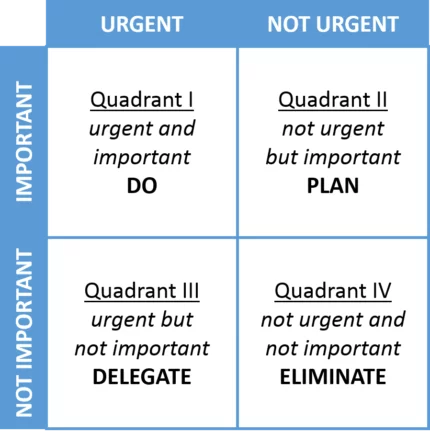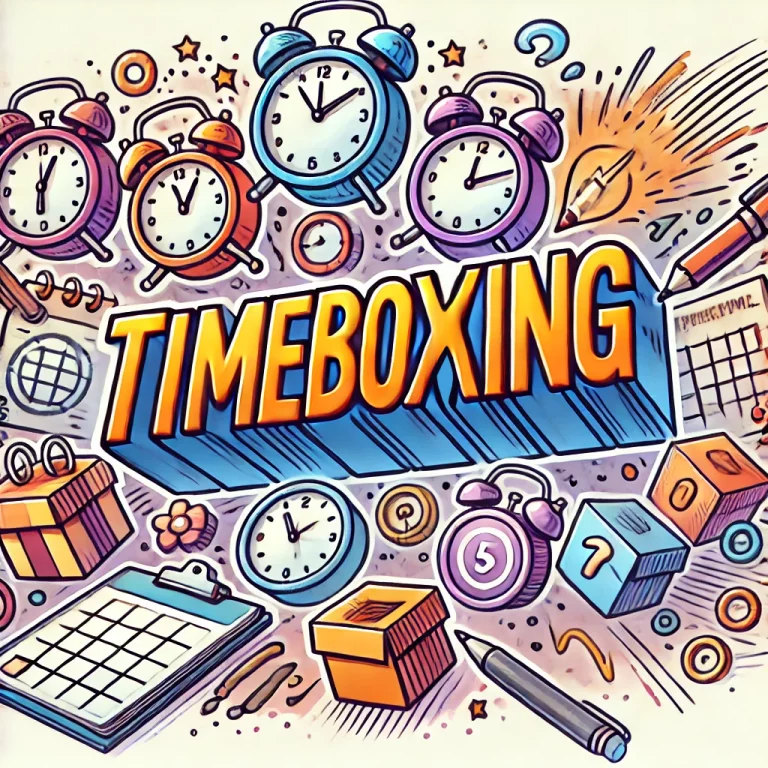
How The Eisenhower Matrix Can Help You
Contents
The Eisenhower Matrix is a great tool to keep you focused on your most impactful tasks.
What Is The Eisenhower Matrix?
The Eisenhower Matrix is a tool to prioritize tasks based on urgency and importance.
Doing this helps you focus on what matters most and stops you spending time on urgent but unimportant things.
How To Implement It
Implementing the matrix is all about:
1) Creating a list of all your tasks.
2) Putting those tasks in the following separate quadrants:
Quadrant I: Do First
Tasks in this quadrant are your first priority.
You should tackle them before anything else, similar to using a Pareto analysis.
Quadrant II: Schedule
Tasks in this quadrant are second priority.
Once you have completed the tasks in quadrant one, you should move on to these tasks.
Quadrant III: Delegate
This quadrant is not a priority.
Despite being urgent, these tasks aren’t significant enough to spend time on.
You should delegate them.
You need to be confident that they will get done but make sure that you do not spend a material amount of time on them.
Quadrant IV: Delete
This quadrant contains tasks to ignore.
You will always have better ways to spend your time than on these tasks.
At the very least, you should ignore them until they become urgent.
Why Does It Work?
The Eisenhower matrix works because it forces you to differentiate between unimportant but urgent tasks and important but non-urgent tasks.
People find it difficult and very uncomfortable to ignore or postpone urgent tasks.
Consequently, they spend far more time than appropriate on unimportant but urgent tasks, to the detriment of more strategic, higher-value tasks.
The matrix forces you to be clear about how much time you are spending on these unimportant tasks and increases the amount of time you allocate to important tasks.
The process needs repeating periodically, perhaps twice per week, as your list of tasks and their priority changes.
Feel like you can take a fun little brain teaser? See our Office Puzzle Challenge here!
3 Reasons To Use The Matrix
There are three key reasons to use the Eisenhower matrix:
1. Tried And Tested
The Eisenhower matrix has demonstrated its effectiveness over decades and in every job and environment.
If you apply it, you can be confident you see substantial benefits.
2. Quick And Simple
The process of using the matrix is straightforward.
It does not require a substantial investment of time, unlike some other systems.
Experienced practitioners categorise tasks automatically as they come in and do not need to sit down and work through their to-do list.
3. Organises Priorities
You can not categorise your tasks between important and unimportant if you are unclear on your priorities.
Going through this process will give you clarity on your goals.
Conclusion
No one time management system works in all situations, which is why there are so many time management methods.
Many people combine the Eisenhower matrix with timeboxing or the Pomodoro technique.
The Eisenhower matrix is a great way to keep focused on your most important tasks, especially if you have a variety of responsibilities.
If that’s you, make sure to give it a try.
Looking for more on Time Management? Check out our fresh 2022 Research on Time Management Statistics here!
Image Credits: Library of Congress , Possessed Photography



